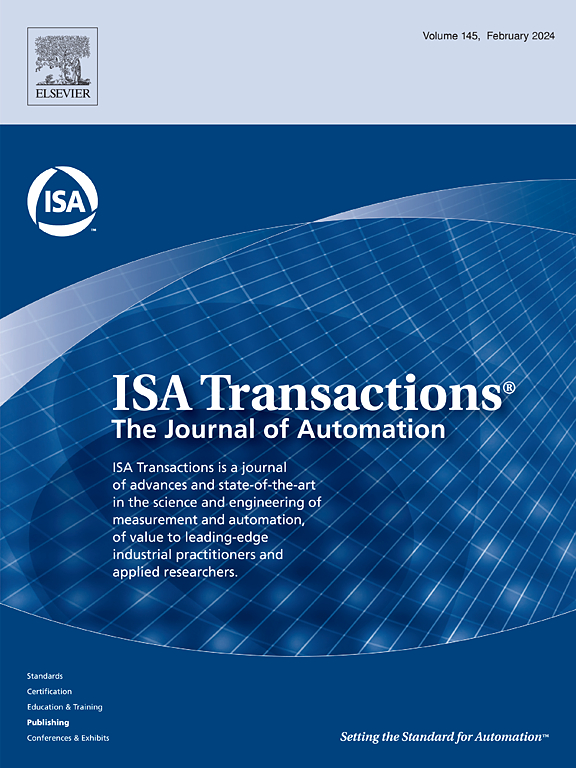Design and implementation of Type-3 intuitionistic fuzzy logic MPPT controller for PV solar system: Comparative study
IF 6.3
2区 计算机科学
Q1 AUTOMATION & CONTROL SYSTEMS
引用次数: 0
Abstract
The performance of a photovoltaic (PV) solar system is affected by partial shading conditions (PSC) and environmental conditions, such as solar irradiance and ambient temperature, which vary throughout the day. This results in variations in the maximum power point (MPP) on the solar PV output characteristic curve. Therefore, various classical MPP tracking (MPPT) techniques have been used to track the MPP and extract maximum power from PV systems. However, these techniques have drawbacks such as lower stability, increased oscillation around the steady state, and slower convergence to the MPP. To overcome this problem, the newly proposed interval Type-3 intuitionistic fuzzy logic (T3IFL) controller has been proposed. The T3IFL MPPT controller combines the uncertainty of Type-3 fuzzy logic (T3FL) controller with intuitionistic concepts. The T3IFL controller is more accurate and offers faster convergence to the MPP under changing climatic and steady-state conditions than classical techniques and T3FL controller. The T3IFL algorithm provides better performance with excellent MPP tracking by controlling the duty cycle of the DC-DC buck converter. Four cases studied were investigated: uniform radiation conditions, a step change in solar radiation with constant temperature, replacing the battery load with the ohmic load with constant radiation and temperature, and partial shading conditions. Experimental validation of the T3IFL was performed on a DC-DC buck converter using real-time hardware-in-the-loop (HIL). Finally, the simulation and experimental results with comparative studies verified the accuracy of the proposed method in tracking the desired value and disturbance/uncertainty attenuation with better response.
光伏太阳能系统的第三类直觉模糊逻辑 MPPT 控制器的设计与实现:比较研究。
光伏(PV)太阳能系统的性能受部分遮阳条件(PSC)和环境条件(如全天变化的太阳辐照度和环境温度)的影响。这导致太阳能光伏输出特性曲线上的最大功率点 (MPP) 发生变化。因此,各种经典的 MPP 跟踪(MPPT)技术被用来跟踪 MPP 并从光伏系统中提取最大功率。然而,这些技术都存在一些缺点,如稳定性较差、围绕稳态的振荡增加、向 MPP 的收敛速度较慢。为了克服这一问题,有人提出了新的区间 3 型直观模糊逻辑(T3IFL)控制器。T3IFL MPPT 控制器结合了第三类模糊逻辑(T3FL)控制器的不确定性和直觉概念。与经典技术和 T3FL 控制器相比,T3IFL 控制器更加精确,在不断变化的气候和稳态条件下能更快地收敛到 MPP。T3IFL 算法通过控制 DC-DC 降压转换器的占空比,提供了更好的性能和出色的 MPP 跟踪。研究了四种情况:均匀辐射条件、恒温条件下太阳辐射的阶跃变化、恒定辐射和温度条件下用欧姆负载替代电池负载以及部分遮阳条件。使用实时硬件在环 (HIL) 在直流-直流降压转换器上对 T3IFL 进行了实验验证。最后,仿真和实验结果与对比研究验证了所提方法在跟踪期望值和干扰/不确定性衰减方面的准确性,以及更好的响应。
本文章由计算机程序翻译,如有差异,请以英文原文为准。
求助全文
约1分钟内获得全文
求助全文
来源期刊

ISA transactions
工程技术-工程:综合
CiteScore
11.70
自引率
12.30%
发文量
824
审稿时长
4.4 months
期刊介绍:
ISA Transactions serves as a platform for showcasing advancements in measurement and automation, catering to both industrial practitioners and applied researchers. It covers a wide array of topics within measurement, including sensors, signal processing, data analysis, and fault detection, supported by techniques such as artificial intelligence and communication systems. Automation topics encompass control strategies, modelling, system reliability, and maintenance, alongside optimization and human-machine interaction. The journal targets research and development professionals in control systems, process instrumentation, and automation from academia and industry.
 求助内容:
求助内容: 应助结果提醒方式:
应助结果提醒方式:


